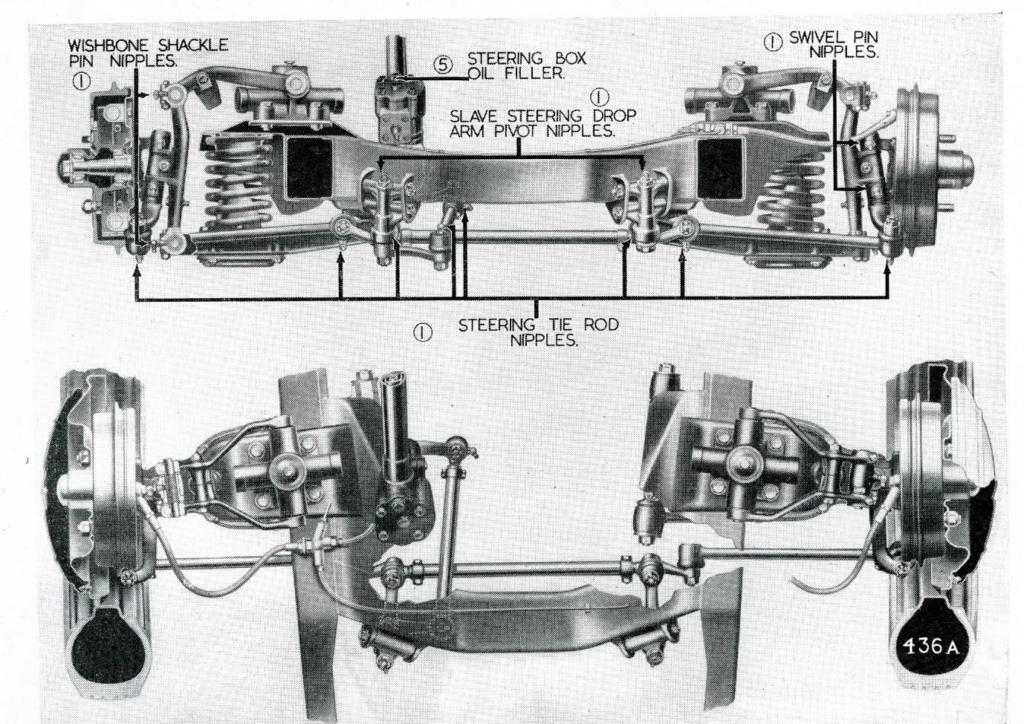From The Globe Magazine, February 2017
IS THE STEERING GETTING HEAVIER OR AM I GETTING WEAKER? By Bob Hobbs
Recently we received a query concerning the heavy steering on one of the later series of Razoredge. The following article is based on the reply to that query and may be of interest to others with the same thoughts. The Renown can be a beast to steer. These cars were never light in that respect and one will note that the steering wheel is of remarkably large diameter to try to make them a bit better. There are several mechanical reasons why the car could have become a beast. The other possibility to consider is that the car is the same as it always was and that the driver is perhaps not quite as sprightly or strong as they used to be. Regular arm strengthening exercises might help. This can be done “in situ” by adopting a policy of driving the “Beast” more often! Another point worth remembering is that these days we have become accustomed to modern powersteering. There are rumours that some drivers even just use one finger hooked over the steering wheel to drive as the steering is so light. Sadly this habit contravenes any safe driving advice and in the event of an emergency could result in loss of control. The Highway Code in the 1950s advocated a ten-to-two or a quarter-to-three grip on the steering wheel. There was a reason for this; the driver should be using both hands on the steering wheel. Considering that we are discussing the driving of a car from the late 1940s to early 1950s perhaps this remains good advice. If, especially at low speeds, one consciously tries using both hands at the same time, pushing up / pulling down, one may well find that the problem is relieved somewhat, or even solved.It has been suggested by some that either conversion to rack and pinion steering or fitting some form of “electric power assist” system might improve matters. We know of members that have tried one of these modifications to the steering in an attempt to make the cars lighter to drive. As far as is known, in every instance the cars have been returned to their original state because of the problems involved. If the steering has become heavier or stiffer than it used to be, the most likely cause is lack of the correct type of grease in the kingpin (swivel pin) bushes. They should be greased every 1000 miles with a high pressure lever grease gun to ensure that the grease gets where it should. This should be done with the front of the car raised such that the front wheels are clear of the ground. This allows the grease to pass between the load bearing faces of the bronze washers that carry the weight and thus ensure correct lubrication. The same applies to the other ball joints and the two rotating idler brackets in the steering. The steering box itself must be filled with hypoy gear oil of SAE90 viscosity, the same as in the rear axle. If the wrong oil is used it can make it more difficult to turn the wheel under load and worse, lead to the destruction of the steering box. Grease must never be used in the steering box. Another major factor is the type of tyres fitted and the pressures to which they are inflated. The original tyres were cross ply and 5.75 x 16 inch in size. These are no longer available and the usual cross ply replacement is 6.00 x 16. Either size should be inflated to 24 psi on the front and 28 psi on the rear. Too low a pressure of course is not only bad for the tyre but also makes the steering heavier. If radial tyres are fitted, the correct size is 175R80 x 16. These make the car much more stable on the open road with fewer tendencies to wander and follow ruts made by trucks. The disadvantage is that at slow speed they make the steering heavier. If fitted, the pressures have to be higher than in the original cross ply tyres. I have them on my own Renown and use 30 psi in the front and 35 in the rear ones. If changing to radial ply tyres is done it is much safer to fit them to all wheels. Cross ply and radial tyres must NEVER be mixed on the same “axle”. It is dangerous and against the law. I know of members who have fitted radial ply tyres all round but kept an old cross ply tyre as a spare because it fits in the boot lid and they say that they would just use it to get home. IT IS AGAINST THE LAW and you might kill someone.One thing that I must point out however is that the Club can only advise that the cars should be maintained in accordance with Standard Triumph’s original manuals and specifications and that any modification to any safety critical part of the car could lead to failure and a possibly fatal accident.

Note. Some cars will have had fitted outer tie rods that have sealed for life bushes at the ends. These cannot be lubricated with a standard grease gun. The numbers, 1 or 5, on the above diagram are the mileages in thousands for lubrication attention.